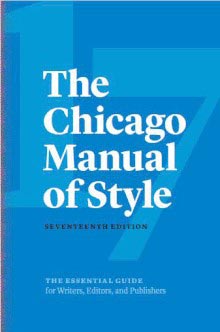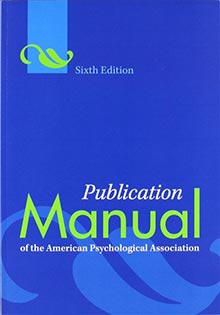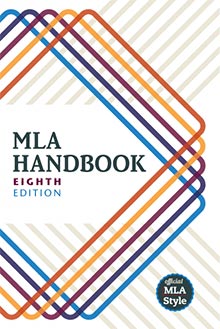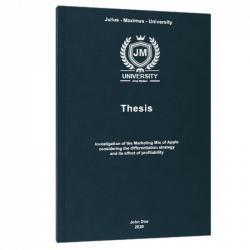Definition: Harvard Referencing
The Harvard style or Harvard referencing is an author-year system that is widely used in academia. The use of Harvard referencing means putting the source citation right after the quote, thus referring directly to the reference list.
This is also called parenthetic referencing, and only short forms are used since the citation is embedded in the actual text (Author Year: Page number). Harvard referencing is completely devoid of footnotes and is widely used because it is straightforward, simple, and economical.
A Preface to Harvard Referencing
If you are about to write an academic paper, you will have to decide which citation system to use. In essence, it is matter of choosing between putting your source citations in footnotes or placing them in short references right after the quote.
The latter is an author-year system, which is also called the Harvard style or Harvard referencing. Quite often, the faculty and/or your supervisor will specifiy which system you should follow.
In some fields of study, it is common to stick to one particular system like Harvard referencing, but in other fields it may not be that clear. One has to bear in mind though, that all citation systems, like Harvard referencing or the APA citation style, have the same purpose: that always making it clear which parts of the text are quoting someone else’s ideas.
FAQs
Harvard referencing, also called the Harvard style, is an author-year system that is widely used in academia for referencing. It requires putting the citation right after a sourced quote, thus referring directly to the reference list. It is one of several referencing and citation styles used for academic writing.
The Harvard Referencing style uses the author-date model. This essentially means that the sources cited in an academic writing piece are referenced using the name of the author(s), the date of publication and page number. For example: (Howard 2010, p. 75). The remaining extra details about the source are thereafter provided in the list of references or bibliography at the end of the paper.
Harvard Referencing is important because it helps the writer to avoid plagiarizing other people’s work. This in turn, protects the writer from penalties or accusations of stealing other people’s work. It also gives readers of the research paper clarity and an easy way to find more information about sources used in the text
Although the Harvard referencing and APA citation styles are similar in their usage, they differ in a few ways. Their main differences can be found in their domain of usage. Harvard referencing is used for humanities, natural or social sciences writings, whereas the APA style is used for education, psychology, and science writings.
The basic format for Harvard referencing requires an in-text citation and a full citation at the end of the academic paper (the reference list or bibliography). Below are some examples, but we have also provided numerous other examples of the Harvard referencing style further down on this article.
The in-text reference follows this sample format: (Howard 2010, p. 75);
The end of text/book reference list is as follows: (Howard, J., (2010). Book of Life. New York: John Mulaney (Publishers).).
Examples
The examples below will help you to understand what is meant by the expression ‘author-year system’. With Harvard Referencing, each (direct and indirect) quote is directly followed by a short reference.
Harvard Referencing Example 1: Theisen argues that … (2013: 166).
Harvard Referencing Example 2: ‘The reader should be able to easily trace all cited sources’ (cf. Krämer 2009: 147–48).
Recommended: APA Citation
The KISS Formula
Harvard referencing is completely without footnotes. The source citation in parenthesis comes right after the quote and is also called a ‘short reference’ (cf. Stickel-Wolf & Wolf 2013: 235). Those short references in Harvard Referencing are directly linked to the reference list with the full references (cf. Rossig & Prätsch 2005: 135).
From a formal perspective, there are different ways to embed the short references in the text using Harvard referencing. It is important to decide which form to use and to stick to it throughout the text (use cf. for indirect quotes but not for direct quotes) (cf. Karmasin & Ribing 2014: 121):
Harvard Referencing in Our BachelorPrint Blog
You probably have noticed by now that we are also using an author-year system in our blog. At the bottom of the page of each text you can find a reference list. Using Harvard referencing the reference list looks like this:
APA manual (2010). Publication Manual of the American Psychological Association. Washington, DC: American Psychological Association.
Szuchman, Leonore T. 2005. Writing With Style—APA Style Made Easy. 3rd edition. Canada: Thomson Wadsworth.
This is the basic structure for each entry according to Harvard referencing: Surname, First name. Year of publication. Title. Edition. Place of publication: Publisher.
Harvard Referencing or Footnotes?
Krämer says that different systems, like Harvard referencing or APA citation style, compete when it comes to referencing, but they have the same goal: The reader should be able to find your sources and check whether your quotes are true to the original (cf. 2009: 147–48).
Still, there are qualitative differences between the systems and some might be regarded as clearer or seem to disrupt the flow less than others. Not every system is suitable for every field of study, but you will see that Harvard referencing is very popular.
All Citation Systems
The table below presents an overview of the most common citation systems and the fields of study in which they are predominantly used (cf. Kruse 2010: 116). Most systems are author-year systems and the term Harvard style or Harvard referencing is widely accepted as an umbrella term for the author-year-system concept.
| Citation system | Application | Comment |
| Harvard referencing | In almost all disciplines | Author-year system, no footnotes, short references in the text https://libweb.anglia.ac.uk/referencing/files/Harvard_referencing_2015.pdf |
| APA, American Psychological Association | Social and Natural sciences, Psychology | Author-year system, no footnotes, short references in the text www.apastyle.org |
| Chicago citation system | History, Literature, Anthropology, Science of Art | Short references in the text, author-year system, explicit footnote system as an alternative http://www.chicagomanualofstyle.org/home.html |
| MLA, Modern Language Association | Literature and Linguistics | Short references in the text, author-title system and footnote system https://www.mla.org/MLA-Style |
| CSE Council of Science Editors | Biology and Natural sciences | Short references in the text, use of superscripts to refer to sources in the reference list (similar to footnotes), author and year in the text if need be https://www.councilscienceeditors.org/publications/ |
Recommended: How to cite a book
According to Kornmeier, Harvard referencing is the rule rather than the exception, while footnotes are hardly ever used for source citations (cf. 2013: 283). Moreover, Harvard referencing can be used in all disciplines if necessary.
Source citations can be either placed right after the quote in parentheses (author-year system/Harvard referencing), or at the bottom of the page in footnotes (e.g. MLA Handbook), which is also a matter of discussion in literature about academic writing.
However, the term Harvard style or Harvard referencing does not refer to an actual Manual of Style. Harvard referencing is just ‘another name for the author/date citation system, the custom of using author and date in parentheses, e.g. (Robbins 1987) to refer readers to the full bibliographic citations’ (cf. Harvard Library 2018, Chernin 1988).
Chicago Style:

APA Manual of Style:

MLA Handbook:

Pros and Cons of Harvard Referencing & Referencing with Footnotes
The table below lists advantages and disadvantages of Harvard referencing compared to referencing with footnotes (cf. Franck & Stary 2009: 193; Kornmeier 2013: 283; Krämer 2009: 148ff.; Kruse 2010: 118f.; Rossig & Prätsch 2005: 133, 135; Stickel-Wolf & Wolf 2013: 235f.; Theisen 2013: 167; Winter 2004: 88).
| Harvard referencing | Referencing with footnotes | |
| Advantages | - Harvard referencing is easy to put into practice, no need to create footnotes for referencing - No doubling of full references with Harvard referencing: the short references are directly linked to the reference list - Saves space - Footnotes are not permitted in Harvard referencing: prevents you from transferring interesting parts - Less work in comparison to creating footnotes |
- If a source is quoted for the first time, a full reference must be given to ensure that sources are identified easily - Allows the use of footnotes for comments, references to further readings, examples etc. - Sources can be described in greater detail than in Harvard referencing - Easier for the reader to judge sources straightaway without having to look them up in the reference list |
| Disadvantages | - Insufficient information when using Harvard referencing, short references do not tell much about the nature of the source cited - Harvard Referencing is restricted to the use of academic sources as it is not possible to describe sources in detail - Additional comments would fragment the text, but there might be cases where such comments are necessary |
- More difficult to manage and more time-consuming than Harvard referencing - A reference list is an obligatory part of a dissertation, a Bachelor’s thesis, and Master’s thesis. Hence, full references in the text are not necessary - A huge number of footnotes with comments and examples, in addition to references in the footnotes, disturbs the reading flow |
| Suitable for | Harvard referencing is very handy for short academic papers, e.g. seminar papers or project proposals. | Useful system for longer papers, particularly if footnotes with additional comments are needed and a large number of sources are cited, e.g. dissertation, Master’s thesis. |
Go with what you find easier to put into practice. Besides, you can judge for yourself, as this text uses Harvard referencing, and form your own opinion about whether it disrupts the flow.
Harvard Referencing with Footnotes
In actual practice, you might come across a somewhat mixed system. Short references in parentheses are used in the text, directly referring to the reference list. In addition, footnotes are used (even though they are not part of Harvard referencing), for additional comments only, not for source citations.
Even though Theisen dismisses this idea as a rather messy and unaesthetic mixture of both Harvard referencing and referencing with footnotes (cf. 2013: 166), there are quite a few advantages to it:
- Either way, you have to provide a reference list for your bachelor’s thesis, master’s thesis or dissertation. Using short references in the text saves space, since you only list sources in the reference list you actually cited.
- In addition, footnotes as an addition with Harvard referencing can be used for comments or examples. This might come in handy when writing a more extensive academic paper such as a Master’s thesis.
- Footnotes for comments are merely an additional feature of Harvard referencing.
- The clear separation of source citations (in the text) and additional remarks (in footnotes) makes the reader’s life a lot easier.
Footnotes can be added to Harvard referencing to allow the inclusion of additional remarks. However, it is important to use footnotes only for remarks and not for source citations to keep remarks and citations separate. (cf. Stickel-Wolf & Wolf 2013: 236).
Examples: Harvard Referencing with Additional Footnotes
The example on the right shows how to use Harvard referencing with additional footnotes for comments (Dexter 2018).

numerous advantages for Canadian students:
- ✓ 3D live preview of your configuration
- ✓ Free express delivery for every order
- ✓ High-quality bindings with individual embossing

In a Nutshell
- All citation systems have the same purpose: Separating someone else’s ideas from your own and making sure that your sources can be traced easily.
- Not every system might be suitable for a particular field of study, and if your faculty/supervisor prescribes a particular system, it is best to comply with that request.
- The most known systems are Harvard referencing and referencing with footnotes.
- Harvard referencing is simple and economical because the source citation is placed right after the quote as a short reference. The latter is directly linked to the reference list.
- Recommendation: It is possible to combine both Harvard referencing and the use of footnotes to some extent. This means that, source citations are in the text (in short reference, Harvard referencing), and footnotes are only used for additional remarks.

